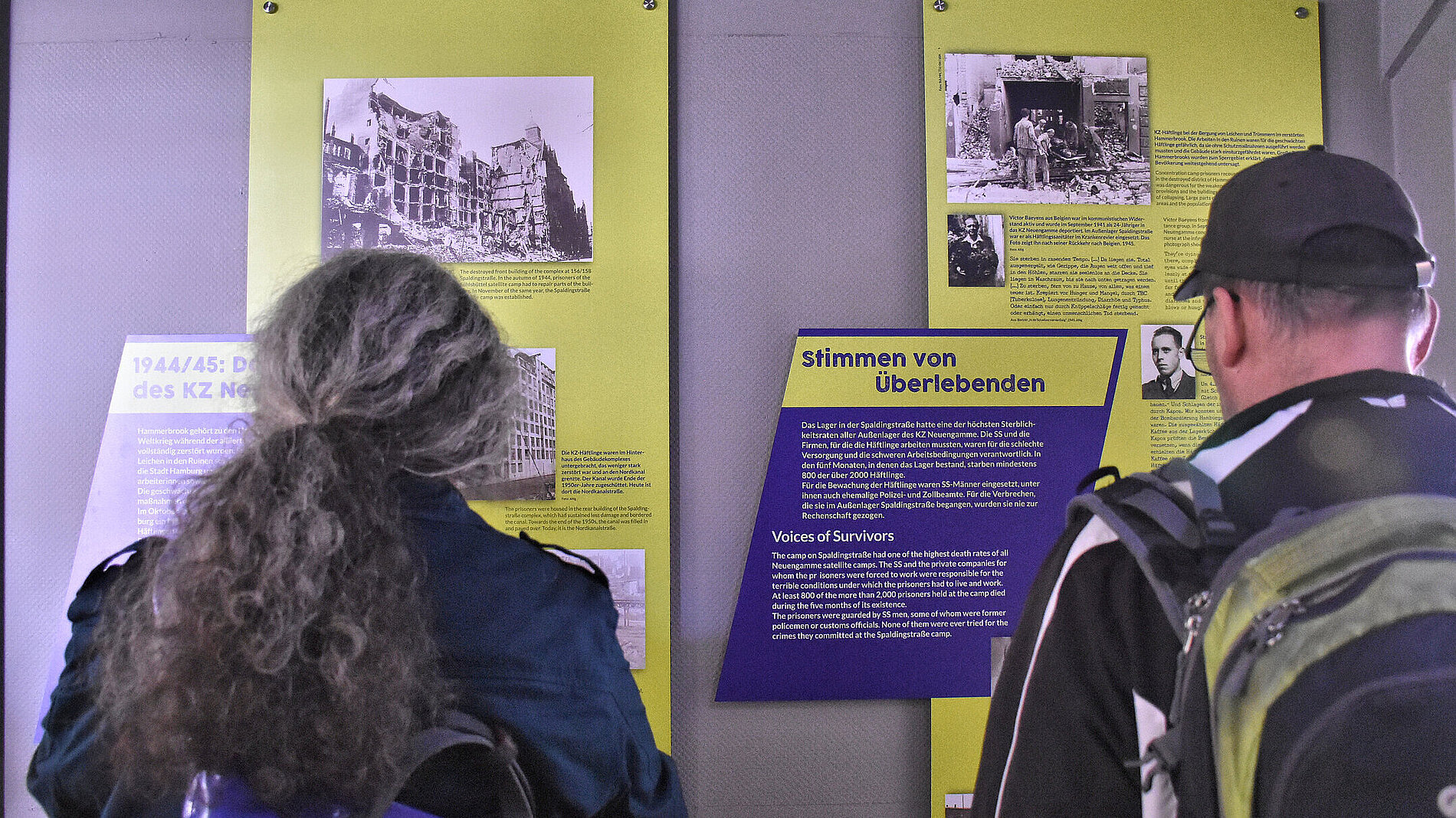Spaldingstrasse satellite camp (St Georgsburg)
The seven-story building complex known as the Georgsburg was built in 1910 and was initially used as a tobacco factory. In October 1944, part of the building – which was nearly unscathed by Allied bombs, unlike the rest of the Hammerbrook quarter – was designated a satellite camp of the Neuengamme concentration camp. Around 2,000 male prisoners from Neuengamme were housed in the building. A similar seizure had only the satellite camp Hamburg-Veddel (Dessauer Ufer), but the Hamburg-Hammerbrook satellite camp (also known as the Spaldingstrasse satellite camp) was also the main base for all satellite camps in Hamburg.
Life in the Spaldingstrasse satellite camp
The living conditions for the prisoners, most of them were Russian, Polish, French, Belgian, Danish, Czech and German, in the satellite camp were catastrophic. Prisoners had to labour until sundown in the bombed surrounding area. They had to do cleaning labour and repair railway lines. The heavy labour and the dangerous locations are the reasons for the high numbered dead people; by the start of April 1945, around 800 of the prisoners had died.
The camp was cleared in April 1945 and the prisoners were sent to the Sandbostel reception camp near Bremervörde. Many of them died before and even after the liberation by British troops on 29 April 1945.
Memorial
As early as the 1980s, efforts were made to install a plaque on the site of the former satellite camp. However, the owner of the building was opposed to it. Thanks to an initiative by a Hamburg resident whose uncle had died in the satellite camp, along with the Friends of the Neuengamme Concentration Camp Memorial, two black plaques with information in German and English were eventually installed on the site by the Hamburg Cultural Authority. After lengthy and difficult negotiations with the building’s owner at the time – the Immobilien Verwertungsgesellschaft real estate company – the two plaques were finally officially dedicated on 26 October 2009.
Disputes over a memorial plaque
A few weeks later, however, after tenants had complained that they were ‘bad for business’, the plaques were removed and bolted to the wall in a concealed part of the building’s rear courtyard, which is not publicly accessible. Following fierce protests by the Hamburg Cultural Authority, the Neuengamme Concentration Camp Memorial, the Jewish community of Hamburg and associations of survivors of the Neuengamme concentration camp, the plaques were fixed to the front of the building again by the owner at the end November 2009. The branch manager of the real estate company issued statement saying: ‘Of course the plaques should be placed on the street, where everyone can see them – and not hidden in the rear courtyard. We are sorry for what happened. We made a mistake.’
Exhibition
After the building changed ownership, the hotel and hostel chain A&O opened a 2,000-bed hostel in the renovated complex in May 2012. The hostel caters mainly to youth groups and school classes. The hostel operator approached the Neuengamme Concentration Camp Memorial beforehand for assistance in setting up a small exhibition on the history of the building and its use as a satellite camp. This exhibition was redesigned in 2025. It is on permanent public display in the hotel foyer in German and English.
Stolperschwelle
In April 2025, a Stolperschwelle ("stumbling threshold") was laid in front of the A&O hostel at Spaldingstraße 162 at the instigation of the Hamburg Stumbling Stone Initiative. It is the size of five stumbling stones and commemorates the prisoners of the satellite camp.




